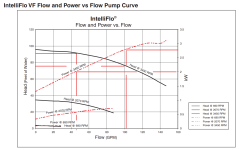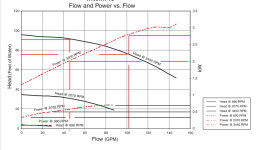- Jun 7, 2017
- 9,121
- Pool Size
- 29000
- Surface
- Plaster
- Chlorine
- Salt Water Generator
- SWG Type
- Jandy Aquapure 1400
Based on my Aqualink display, my pump uses between 380 and 420 watts when set at 2000 rpms. Is the variance in usage an indication that the pump might be going? I don't recall if this has ever had the variance before. This is season #8. The pump runs 24x7 at low RPMs during the 5-6 month season. Last season and this season I was getting some squealing upon startup. I ran at low RPMs for a couple days and now am able to run at any RPM with no noise. I am not sure if that is a sign of bearing or other failure. With the cost of this pump approaching $2000, is there any maintenance I can do to avoid pump failure?



